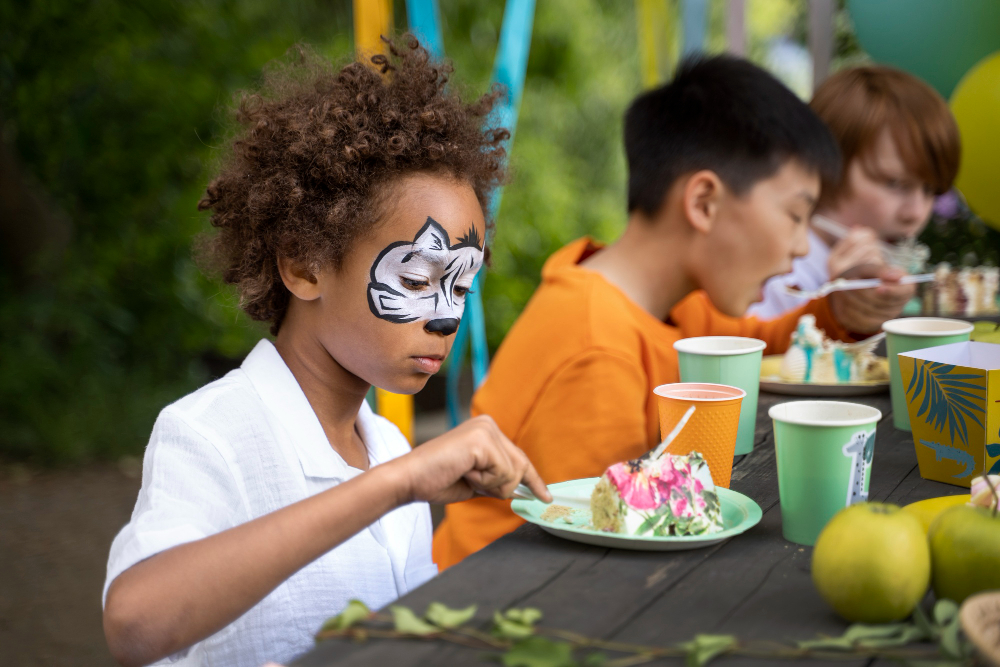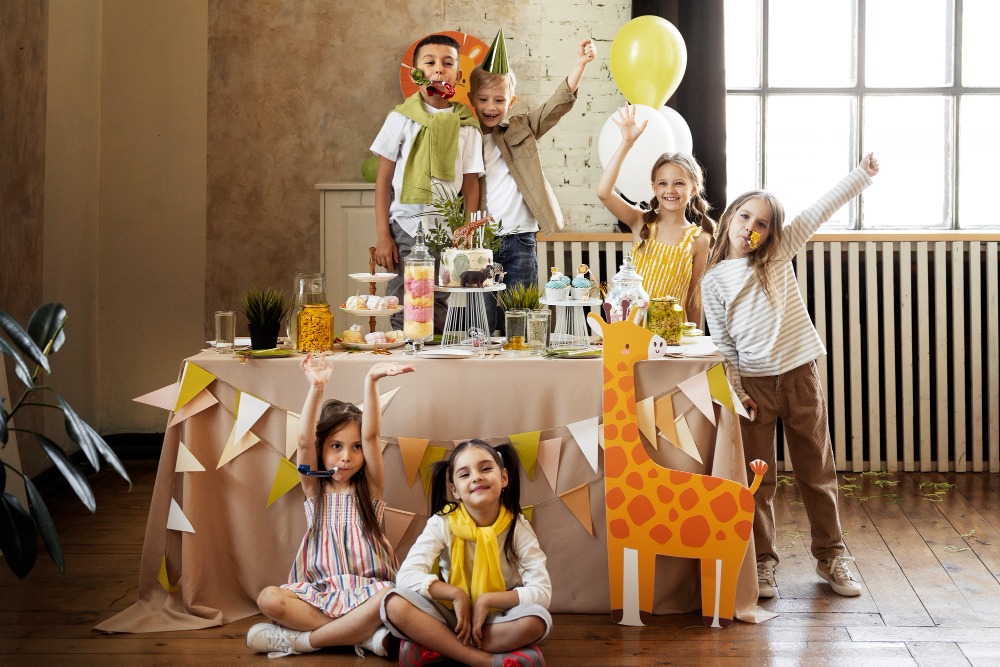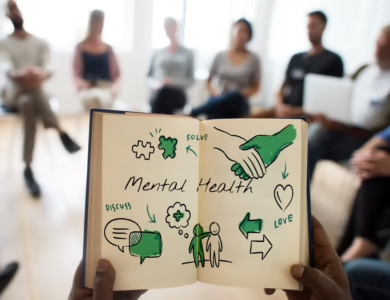8 Engaging Cultural Fair Activities for Kids to Learn About Diversity
Fun and Educational Multicultural Experiences for Young Minds

In today’s increasingly interconnected world, many children lack exposure to diverse cultures, limiting their understanding of global perspectives. This gap in cultural awareness can lead to misunderstandings and missed opportunities for personal growth. How can we bridge this divide and nurture culturally savvy kids? The solution lies in engaging, hands-on cultural fair activities that make learning about diversity fun and memorable. By introducing children to a world of traditions, customs, and experiences, we can cultivate empathy, curiosity, and a broader worldview from an early age.
Cultural Fair Activities That Spark Curiosity and Celebrate Diversity
Are you ready to embark on a global adventure with your little ones? Cultural fair activities for kids offer a vibrant gateway to multicultural learning experiences that will captivate young minds. These interactive cultural activities go beyond textbooks, bringing the world’s rich tapestry of traditions to life through hands-on exploration and play.
From savoring exotic flavors to donning traditional attire, these child-friendly cultural experiences create lasting impressions. By engaging in cultural exploration games, children develop global awareness naturally and joyfully. Whether you’re planning a school event, community gathering, or family day out, these diversity education activities will transform learning into an exciting journey around the world.
1. Global Costume Parade
A Global Costume Parade brings the world’s vibrant cultures to life through a dazzling display of traditional attire. This cultural dress-up activity invites children to step into the shoes and clothes of diverse societies, fostering a deep appreciation for global traditions.
As young participants don colorful saris, intricate kimonos, or flowing dashikis, they embark on a journey of discovery. This multicultural fashion show for kids not only showcases beautiful garments but also opens doors to understanding the stories behind each piece. During the parade, brief presentations highlight the significance of each costume, its origins, and cultural context, turning a simple walk into an educational adventure.
Cultural fair activities for kids like this diverse attire exhibition offer a unique, hands-on approach to learning. Children eagerly absorb information about different cultures as they admire their friends’ outfits or proudly wear their own. The international dress parade becomes a living, breathing lesson in global diversity.
Consider a group of excited third-graders preparing for their school’s cultural parade. As Maya carefully adjusts her Celtic kilt and Sam practices walking in his traditional Korean hanbok, they share stories about their heritage. This cultural clothing learning experience sparks conversations, encourages questions, and builds bridges of understanding among the young participants.
Through this global costume exploration, children develop a tangible connection to cultures they might otherwise only read about in books. The result is a memorable event that plants seeds of cultural appreciation, empathy, and global citizenship in young minds.
2. International Food Tasting Adventure
From the vibrant costumes of our global parade, we now turn to another sense-awakening experience: an International Food Tasting Adventure. This multicultural food sampling activity tantalizes taste buds and opens young minds to the diverse flavors of our world.
Set up as a series of inviting food stations, each representing a different country or region, this global cuisine for kids event offers a smorgasbord of cultural delights. Small portions of traditional dishes and snacks allow children to embark on a culinary journey without overwhelming their palates. Informative cards accompany each dish, detailing ingredients, preparation methods, and cultural significance, turning each bite into an educational moment.
As part of the array of cultural fair activities for kids, this diverse food learning activity encourages children to step out of their comfort zones and try new flavors. The international flavor discovery process becomes a fun, engaging way to learn about different cultures through their culinary traditions.
Envision a group of curious kids approaching a table laden with Middle Eastern mezze. Nine-year-old Aisha’s eyes widen as she tastes hummus for the first time, while her friend Jack marvels at the tang of tabbouleh. Their excited chatter about the new flavors sparks discussions about the regions these foods come from, seamlessly blending culinary education for children with cultural exploration.
This world-food-tasting experience not only broadens children’s palates but also fosters an appreciation for global diversity. As kids sample dishes from various cultures, they develop a deeper understanding of how food reflects history, geography, and traditions. The result is a flavorful lesson in cultural empathy and global citizenship, one delicious bite at a time.

3. Multicultural Arts and Crafts Workshop
After savoring global flavors, our cultural journey continues with a hands-on exploration of world art traditions. A Multicultural Arts and Crafts Workshop offers children the opportunity to express their creativity while learning about diverse artistic practices from around the globe.
This international craft workshop features a variety of stations, each dedicated to a unique cultural art form. From intricate Chinese paper cutting to vibrant Indian rangoli designs, children immerse themselves in global art projects that span continents and centuries. As they create, kids absorb the rich history and significance behind each craft, fostering a deeper appreciation for cultural diversity.
These diverse craft activities form an integral part of cultural fair activities for kids, providing a tactile and visual way to engage with different traditions. Through creative cultural learning, children not only produce beautiful artworks but also gain insights into the values, beliefs, and aesthetics of various societies.
Visualize a bustling workshop where Emma, age 10, carefully weaves colorful threads into a Native American dreamcatcher. Nearby, her classmate Jamal applies paint to an African-inspired mask, his face alight with concentration. As they work, a facilitator shares stories about the origins and meanings of these crafts, turning each creation into a lesson in cultural understanding.
These hands-on diversity activities leave a lasting impression on young minds. By engaging in world art exploration, children develop an appreciation for the beauty of cultural differences and the universal human drive for creative expression. The result is a generation more open to diverse perspectives and eager to explore the rich tapestry of global cultures.
4. World Music and Dance Showcase
From the visual arts, we now move to the auditory and kinesthetic realms with a World Music and Dance Showcase. This vibrant event brings the sounds and movements of diverse cultures to life, offering children an immersive exploration of global rhythms and melodies.
At various stations, kids can get hands-on experience with diverse musical instruments from around the world. They might strum a Spanish guitar, tap out a beat on African drums, or experiment with the gentle tones of a Chinese erhu. This international rhythm exploration not only introduces children to new sounds but also helps them understand the cultural contexts of different musical traditions.
As part of the array of cultural fair activities for kids, a cultural dance workshop allows young participants to learn simple steps from various world dances. From the graceful movements of a Hawaiian hula to the energetic footwork of an Irish jig, children engage in world dance learning that’s both fun and educational.
Consider a scenario where 8-year-old Liam, initially shy, finds himself captivated by the pulsating rhythms of a Brazilian samba. As he joins a group learning basic samba steps, his inhibitions melt away, replaced by joy and curiosity about Brazilian culture. Meanwhile, his friend Aisha discovers a natural talent for playing the Indian tabla, sparking a newfound interest in South Asian music.
This multicultural music education goes beyond mere entertainment. It fosters cultural appreciation, develops musical skills, and encourages physical activity. Through interactive cultural performances, children learn to appreciate the diversity of global musical traditions and the universal power of rhythm and movement to bring people together.
5. Storytelling from Around the World
From the lively rhythms of our music and dance showcase, we now settle into a cozy corner for a journey through words and imagination with Storytelling from Around the World. This enchanting activity transports children across continents and cultures through the power of narrative.
In a warmly lit space adorned with colorful cushions and cultural artifacts, a skilled storyteller weaves tales from various traditions. This global folklore session introduces children to a rich tapestry of myths, legends, and fables from different corners of the globe. Visual aids, puppets, and interactive elements bring these stories to life, captivating young audiences and sparking their curiosity about diverse cultures.
As one of the most engaging cultural fair activities for kids, multicultural storytelling offers a unique window into the values, beliefs, and traditions of different societies. Through diverse narrative exploration, children develop empathy and understanding for people from various backgrounds. After each tale, a brief discussion encourages kids to reflect on the story’s moral or cultural significance, deepening their comprehension and appreciation.
Envision a group of children sitting spellbound as they listen to an African trickster tale. Seven-year-old Zoe giggles at the clever antics of Anansi the spider, while her friend Miguel ponders the story’s lesson about wisdom and humility. This interactive cultural storytelling not only entertains but also plants seeds of cultural awareness and global citizenship.
By exposing children to world literature in this engaging format, we nurture their imagination and broaden their worldview. Cultural tale-sharing becomes a bridge between different traditions, fostering respect and curiosity for diverse ways of life. This international story time leaves a lasting impact, inspiring children to seek out more stories from around the world and embrace the rich diversity of human experiences.
6. Global Games Olympics
From the realm of stories, we move to the world of play with our Global Games Olympics. This exciting event brings together a variety of international children’s games, offering kids a chance to explore diverse cultures through active, hands-on fun.
Stations are set up across the play area, each dedicated to a traditional game from a different part of the world. Children might find themselves strategizing over an African mancala board, leaping through a Chinese jump rope, or testing their aim with a Native American hoop and pole game. Each station provides a brief explanation of the game’s origins and cultural significance, turning the play into an educational experience.
These cultural sports activities form a key component of cultural fair activities for kids, combining physical activity with cultural learning. Through diverse playground games, children gain insights into how different societies have developed unique forms of recreation and competition. This global play exploration fosters an appreciation for the creativity and diversity of human play traditions.
Visualize a bustling field where 9-year-old Aisha is teaching her friends the rules of kho kho, a traditional Indian tag game she learned at one of the stations. Nearby, a group of excited kids are engrossed in a world game championship of tug-of-war, discovering how this simple game is played across various cultures. The air is filled with laughter and shouts of encouragement in multiple languages.
This multicultural recreation event does more than just entertain; it builds bridges between cultures through the universal language of play. By participating in interactive cultural games, children develop teamwork skills, learn about fair play across cultures, and gain a deeper understanding of global traditions. The Global Games Olympics leaves kids with lasting memories and a newfound appreciation for the rich diversity of play around the world.
7. Language Discovery Zone
From the physical exertion of global games, we now turn our attention to the fascinating world of languages with our Language Discovery Zone. This interactive space invites children to explore the rich tapestry of global communication through engaging, hands-on activities.
Colorful stations dotted around the area offer kids the chance to learn basic words and phrases in various languages. Visual aids, audio recordings, and interactive games make this multilingual learning for kids both fun and accessible. Children might find themselves matching “hello” greetings in different languages, embarking on a scavenger hunt using words from various cultures, or tracing characters from non-Latin alphabets.
As one of the most intellectually stimulating cultural fair activities for kids, the Language Discovery Zone promotes cultural language exploration in a playful, pressure-free environment. Through diverse linguistic activities, children gain an appreciation for the world’s language diversity and the unique ways different cultures express ideas.
Envision 8-year-old Liam excitedly teaches his friends how to count to ten in Mandarin, a skill he just picked up at one of the stations. Nearby, a group of children are giggling as they try to pronounce “butterfly” in Arabic, guided by a native speaker volunteer. These global communication games not only introduce new words but also foster curiosity about the cultures behind the languages.
This language diversity education goes beyond mere vocabulary acquisition. It opens children’s minds to different ways of thinking and expressing ideas, laying the foundation for future language learning and cross-cultural understanding. The international alphabet discovery and interactive language learning experiences in this zone spark a lifelong interest in languages and cultures, preparing kids for our increasingly interconnected world.

8. Cultural Innovation Showcase
From the world of languages, we now venture into the realm of innovation with our Cultural Innovation Showcase. This eye-opening exhibit highlights the global nature of human ingenuity, showcasing inventions and scientific discoveries from diverse cultures throughout history and in the present day.
Interactive displays and hands-on activities bring these innovations to life, allowing children to engage directly with concepts and creations from around the world. Kids might find themselves building a simple abacus to understand ancient Chinese mathematics, experimenting with shadow puppetry to explore Indonesian storytelling techniques, or learning about the astronomical innovations of ancient Mayan civilizations.
As one of the most thought-provoking cultural fair activities for kids, this global invention exploration challenges common narratives about the origins of scientific and technological progress. Through diverse technology learning experiences, children discover that innovation knows no cultural boundaries and that great ideas can come from anywhere in the world.
Visualize 10-year-old Aisha’s eyes lighting up as she learns about the contributions of medieval Islamic scholars to modern mathematics. Nearby, her classmate Carlos is excitedly explaining to his friends how ancient Incan engineers designed earthquake-resistant buildings. These multicultural STEM activities not only educate but also inspire, showing children the endless possibilities of human creativity across cultures.
This international innovation showcase goes beyond mere facts and figures. It instills in children a sense of wonder at the diversity of human achievement and encourages them to see themselves as part of a global community of innovators. By engaging with interactive cultural technology, kids develop a more inclusive understanding of scientific progress and are inspired to contribute their ideas to the world’s pool of knowledge.
FAQs About Cultural Fair Activities for Kids
- How can I make cultural fair activities more engaging for children of different ages?
To engage children of various ages, tailor activities to their developmental stages. For younger kids, focus on sensory experiences like trying foods or simple crafts. Older children may enjoy more complex tasks like language games or innovation challenges. Incorporate interactive elements such as touchscreens or VR for tech-savvy teens. Use colorful visuals, hands-on materials, and short, engaging sessions to maintain interest across all age groups. Consider creating multi-level activities that allow children to engage at their own pace and ability level.
- What are some ways to ensure cultural representations are accurate and respectful?
Conduct thorough research using reputable sources and academic materials. Reach out to cultural organizations or community leaders for guidance and validation. Involve representatives from the cultures you’re featuring in the planning and execution process. Avoid generalizations and stereotypes by focusing on specific traditions or regions rather than broad cultural depictions. Be mindful of context and significance when presenting cultural elements. Encourage an attitude of respectful curiosity and learning rather than exoticization or appropriation.
- How can parents extend cultural learning beyond the fair or event?
Encourage families to explore diverse cuisines at home or in local restaurants. Suggest reading books or watching age-appropriate films from different cultures. Recommend visiting cultural museums, attending community festivals, or participating in cultural workshops. Provide resources for language learning apps or online cultural exchange programs. Encourage pen pal relationships with children from other countries. Suggest creating a “culture corner” at home where kids can display artifacts, photos, or information about different cultures they’re learning about.
- What are some tips for organizing a successful cultural fair for kids on a limited budget?
Leverage community partnerships by reaching out to local cultural organizations, universities, or embassies for resources and volunteers. Use recyclable materials for crafts and decorations. Opt for digital displays instead of printed materials where possible. Encourage potluck-style food sharing for the international food tasting. Utilize free online resources for music and storytelling. Host the event in a public space like a park or community center to reduce venue costs. Create a volunteer network of parents and community members to help with planning and execution.
You may also like 15 Brilliant Cultural Fair Ideas to Captivate Visitors
Conclusion:
Introducing children to diverse cultures through engaging, interactive activities is more than just fun, it’s a crucial step in fostering global citizens of tomorrow. These cultural fair activities for kids not only educate but also nurture empathy, curiosity, and open-mindedness. By experiencing the rich tapestry of global traditions, cuisines, arts, and innovations, children develop a deeper appreciation for diversity and a more inclusive worldview.
We encourage parents, educators, and community leaders to adapt and expand on these ideas, creating impactful cultural learning experiences tailored to their unique contexts. Let’s commit to prioritizing multicultural education through hands-on, enjoyable activities that leave lasting impressions. Together, we can raise a generation that celebrates diversity, embraces cultural differences, and works towards a more understanding and connected world.
Further reading: 10 Creative and Exciting Daycare Program Ideas for Fun and Learning
To further explore cultural diversity and expand your child’s global awareness, check out these engaging online tools: National Geographic Kids for interactive cultural education.



